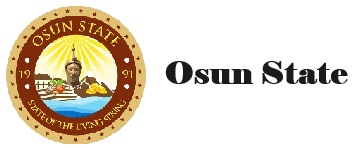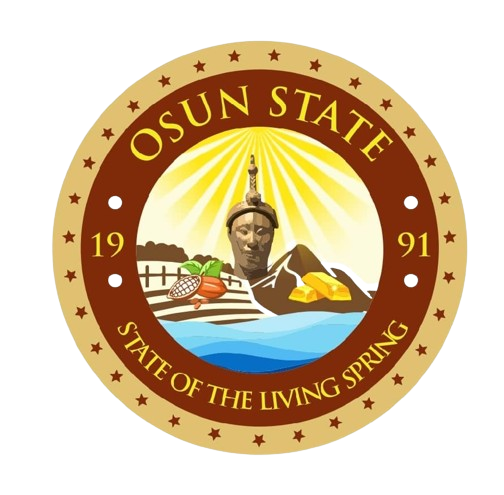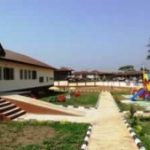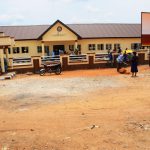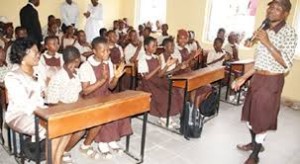
OPINION: #OSUNEDU, Making Sense Of Aregbesola’s Edu-Revolution In The State Of Osun – Ogunyemi Bukola
 I have met Ogbeni Rauf Aregbesola only a few times, the last time at the launch of my father’s book in April 2013. In his speech that day, Ogbeni reiterated his administration’s plans to revolutionize education in the State of Osun, and has since rolled out several reforms in the education sector in the state, some of which have generated serious controversies. This explains, in part, my decision to attend the State of Osun Education Policy Summit organized by the Osun Movement for Peace, a group of non-partisan academics and professionals, not just as a new media observer but as an Osun indigene.
I have met Ogbeni Rauf Aregbesola only a few times, the last time at the launch of my father’s book in April 2013. In his speech that day, Ogbeni reiterated his administration’s plans to revolutionize education in the State of Osun, and has since rolled out several reforms in the education sector in the state, some of which have generated serious controversies. This explains, in part, my decision to attend the State of Osun Education Policy Summit organized by the Osun Movement for Peace, a group of non-partisan academics and professionals, not just as a new media observer but as an Osun indigene.
According to the chairman of the event, our job was to critically examine the educational policies introduced by the Aregbesola administration and make recommendations. The summit featured presentations by Dr. Isiaka Owoade, Professor Ayo Olukotun, Chief Layi Oyeditan and the State Deputy Governor, Otunba Titilayo Laoye-Tomori, who doubles as the Commissioner for Education. They took turns to explain the various policies of government in the education sector and relay the success stories.
Perhaps the most controversial and widely misunderstood educational policy of Ogbeni Rauf Aregbesola is the schools reclassification policy leading to a new school system in the state. The new system is a departure from the 6-3-3-4 and 9-3-4 systems to the 4-5-3-4 system which has led to the restructuring of primary and secondary schools into Elementary, Middle and High schools.
The Elementary Schools will cater for pupils between the ages of 6 and 9, grouped into Grades 1 to 4 as against the old designation, Primary 1 – 4. Each elementary school is designed to accommodate 900 pupils and daily academic activities run from 8am to 2pm. As at December 2013, 13 of the elementary schools have been completed and commissioned.
The Middle Schools will cater for pupils and students between the ages of 10 and 14, grouped into Grades 5 to 9 as against the old designation Primary 5 and 6, and JSS 1 – 3. Each middle school is designed to accommodate between 900 and 1200 pupils/students and academic activities run from 8am to 3pm daily, while the High Schools are for students within the age bracket of 15 – 17 years, grouped into Grades 10 to 12 as against SSS 1 – 3. Each high school is designed to accommodate 3000 students and daily academic activities from 8am to 5pm.
The implications of this new school system include the phasing out of single sex schools, the merger of schools within the same geographical location irrespective of their religious or community ownership backgrounds, and demolition of old school structures after students have been relocated to new premises. The Osun State government is poised to commit about N30 billion to the building of 100 elementary, 50 middle, and 20 high schools across the state. This will cater in total for about 210,000 pupils/students.
The reclassification of schools naturally gave birth to unified school uniform project. The idea is that all elementary schools should have a common uniform, and same applies to the middle and high schools. Toward this end, government established a garment factory in Osogbo for the supply of complete sets of uniforms for all categories of students. The factory has since produced 750,000 sets of uniform which were distributed free to pupils and students across the state, at a cost of N900 million – about N1200 per set.
A less controversial but less publicized policy of the Aregbesola administration is the Osun Elementary School Feeding and Health Programme, referred to as O’MEALS. The vision of the programme is to have a state of well-nourished and healthy children who are happy and eager to not only attend but complete their basic education. Some of the objectives include the alleviation of hunger and malnutrition among school children, job creation, increasing local food production, and the development of small and medium scale enterprises for poverty reduction.
The idea is for all elementary school pupils (Primary 1 – 4) to eat lunch in school. This scheme covers a total of 252,000 pupils, costing the government about N14.8 million per day – about N58 per child per day. Government appointed 3007 food vendors, assigned them to the various schools in the state to supply a certain number of pupils the menu for each day with the one for Thursdays, as an example, being rice with egusi garnished with vegetable, chicken and banana.
This scheme feeds the pupils with 35 herds of cattle, 8,400 crates of eggs and 15,000 whole chickens on a weekly basis and all these are sourced locally. O’Meals has led to the establishment of the Osun Fisheries Outgrowers Production Scheme which now supplies about 400 metric tonnes of fish weekly. It has also led to the Cocoyam Rebirth Programme in which 1000 cocoyam farmers have been trained and assisted in the cultivation of pink cocoyam.
Enrolment in elementary schools has increased by about 40% since the introduction of this scheme, and Osun State now has, according to NBS, the highest rate of primary school enrolment in Nigeria. Apart from the increased enrolment rates, absenteeism has also reduced in elementary schools in Osun State, pupils have shown incredible improvements in their academic performances and most importantly, about 5000 people are indirectly employed and empowered economically.
Perhaps, what the Aregbesola administration considers its greatest educational reform programme in the state is the Opon Imo project. According to him, the need to develop an efficient knowledge based economy and make students ICT compliant, both for learning and self-development inspired the design and distribution of computer tablets, branded Opon Imo, to high school students in the state. The tablets are preloaded with lesson notes on the 17 subjects offered by students in WAEC and NECO exams. Opon Imo also contains lesson notes on extra-curricular subjects such as Civic and Sexuality Education, over 40,000 past questions, 63 e-textbooks and 51 audio tutorials.
According to Otunba Tomori, 28,000 high school students have received the tablet out of a total number of 32,000. The contract for the supply of 150,000 tablets was awarded to a Chinese firm at N1.2 billion and is to be executed in two phases – 50,000 tablets will be imported from China while the remaining 100,000 is to be manufactured in the state. She stated that the initiative has saved the state N8.4 billion as about N9.6 billion would have been spent on the supply of the books and instructional materials on the Opon Imo.
Other achievements in education mentioned at the summit include the upward review in bursaries, from N2000 for students of Colleges of Education and Polytechnics and N3000 for university students to N10, 000. Law and Medical students now receive N20, 000, 100% more than the previous figure. Also, the special grant given to Osun State indigenes at the Law school has increased from N10, 000 to N100, 000. N2.5 billion spent on the provision of 150,000 befitting furniture for 300,000 students, and another N543 million spent on provision of instructional materials. Others include N155 million spent on the sponsorship of 98 medical students to Ukraine and the reintroduction of extracurricular activities like debates, calisthenics and interschool sports competitions.
So why has so much backlash accompanied the introduction of what seems to be commendable policies and reforms? Rauf Aregbesola strikes me an impatient reformer, barely seeing through one reform policy before introducing another. I understand his zeal to turn around the fortunes of the state in the sector under consideration, but introducing so many reforms at once is bound to boomerang, both in execution/implementation and acceptance by the public.
The execution of the Opon Imo idea for example leaves much to be desired. The distribution has been haphazard, because on one hand, students and teachers are settling into the new grade system, and on the other hand, schools are being merged and hundreds of students relocated to new premises. I am yet to understand the logic behind making all the schools in the state wear a common uniform. And I have it on good record that the sets of uniforms supplied by the garment factory are of low quality and barely survived a month of use before tearing. I believe schools should have different uniforms for identity and branding.
Also, claims teachers’ monthly salaries are promptly paid by the 25th of every month are false. Salaries are paid as late as the first week of the next month. Also, Otunba Tomori stated that N14.41 billion has so far been spent on building 39 model schools, which translates into almost N370 million per school. I have seen some of the schools, and the structures there don’t justify that amount.
In conclusion, Ogbeni needs to be a bit less radical and more strategic about execution of what are certainly mostly commendable educational reforms, and commit to consultations with stakeholders and the public before going ahead with policies that are likely to be misunderstood and resisted.
OMOJUWA.COM
Perhaps the most controversial and widely misunderstood educational policy of Ogbeni Rauf Aregbesola is the schools reclassification policy leading to a new school system in the state. The new system is a departure from the 6-3-3-4 and 9-3-4 systems to the 4-5-3-4 system which has led to the restructuring of primary and secondary schools into Elementary, Middle and High schools.
The Elementary Schools will cater for pupils between the ages of 6 and 9, grouped into Grades 1 to 4 as against the old designation, Primary 1 – 4. Each elementary school is designed to accommodate 900 pupils and daily academic activities run from 8am to 2pm. As at December 2013, 13 of the elementary schools have been completed and commissioned.
The Middle Schools will cater for pupils and students between the ages of 10 and 14, grouped into Grades 5 to 9 as against the old designation Primary 5 and 6, and JSS 1 – 3. Each middle school is designed to accommodate between 900 and 1200 pupils/students and academic activities run from 8am to 3pm daily, while the High Schools are for students within the age bracket of 15 – 17 years, grouped into Grades 10 to 12 as against SSS 1 – 3. Each high school is designed to accommodate 3000 students and daily academic activities from 8am to 5pm.
The implications of this new school system include the phasing out of single sex schools, the merger of schools within the same geographical location irrespective of their religious or community ownership backgrounds, and demolition of old school structures after students have been relocated to new premises. The Osun State government is poised to commit about N30 billion to the building of 100 elementary, 50 middle, and 20 high schools across the state. This will cater in total for about 210,000 pupils/students.
The reclassification of schools naturally gave birth to unified school uniform project. The idea is that all elementary schools should have a common uniform, and same applies to the middle and high schools. Toward this end, government established a garment factory in Osogbo for the supply of complete sets of uniforms for all categories of students. The factory has since produced 750,000 sets of uniform which were distributed free to pupils and students across the state, at a cost of N900 million – about N1200 per set.
A less controversial but less publicized policy of the Aregbesola administration is the Osun Elementary School Feeding and Health Programme, referred to as O’MEALS. The vision of the programme is to have a state of well-nourished and healthy children who are happy and eager to not only attend but complete their basic education. Some of the objectives include the alleviation of hunger and malnutrition among school children, job creation, increasing local food production, and the development of small and medium scale enterprises for poverty reduction.
The idea is for all elementary school pupils (Primary 1 – 4) to eat lunch in school. This scheme covers a total of 252,000 pupils, costing the government about N14.8 million per day – about N58 per child per day. Government appointed 3007 food vendors, assigned them to the various schools in the state to supply a certain number of pupils the menu for each day with the one for Thursdays, as an example, being rice with egusi garnished with vegetable, chicken and banana.
This scheme feeds the pupils with 35 herds of cattle, 8,400 crates of eggs and 15,000 whole chickens on a weekly basis and all these are sourced locally. O’Meals has led to the establishment of the Osun Fisheries Outgrowers Production Scheme which now supplies about 400 metric tonnes of fish weekly. It has also led to the Cocoyam Rebirth Programme in which 1000 cocoyam farmers have been trained and assisted in the cultivation of pink cocoyam.
Enrolment in elementary schools has increased by about 40% since the introduction of this scheme, and Osun State now has, according to NBS, the highest rate of primary school enrolment in Nigeria. Apart from the increased enrolment rates, absenteeism has also reduced in elementary schools in Osun State, pupils have shown incredible improvements in their academic performances and most importantly, about 5000 people are indirectly employed and empowered economically.
Perhaps, what the Aregbesola administration considers its greatest educational reform programme in the state is the Opon Imo project. According to him, the need to develop an efficient knowledge based economy and make students ICT compliant, both for learning and self-development inspired the design and distribution of computer tablets, branded Opon Imo, to high school students in the state. The tablets are preloaded with lesson notes on the 17 subjects offered by students in WAEC and NECO exams. Opon Imo also contains lesson notes on extra-curricular subjects such as Civic and Sexuality Education, over 40,000 past questions, 63 e-textbooks and 51 audio tutorials.
According to Otunba Tomori, 28,000 high school students have received the tablet out of a total number of 32,000. The contract for the supply of 150,000 tablets was awarded to a Chinese firm at N1.2 billion and is to be executed in two phases – 50,000 tablets will be imported from China while the remaining 100,000 is to be manufactured in the state. She stated that the initiative has saved the state N8.4 billion as about N9.6 billion would have been spent on the supply of the books and instructional materials on the Opon Imo.
Other achievements in education mentioned at the summit include the upward review in bursaries, from N2000 for students of Colleges of Education and Polytechnics and N3000 for university students to N10, 000. Law and Medical students now receive N20, 000, 100% more than the previous figure. Also, the special grant given to Osun State indigenes at the Law school has increased from N10, 000 to N100, 000. N2.5 billion spent on the provision of 150,000 befitting furniture for 300,000 students, and another N543 million spent on provision of instructional materials. Others include N155 million spent on the sponsorship of 98 medical students to Ukraine and the reintroduction of extracurricular activities like debates, calisthenics and interschool sports competitions.
So why has so much backlash accompanied the introduction of what seems to be commendable policies and reforms? Rauf Aregbesola strikes me an impatient reformer, barely seeing through one reform policy before introducing another. I understand his zeal to turn around the fortunes of the state in the sector under consideration, but introducing so many reforms at once is bound to boomerang, both in execution/implementation and acceptance by the public.
The execution of the Opon Imo idea for example leaves much to be desired. The distribution has been haphazard, because on one hand, students and teachers are settling into the new grade system, and on the other hand, schools are being merged and hundreds of students relocated to new premises. I am yet to understand the logic behind making all the schools in the state wear a common uniform. And I have it on good record that the sets of uniforms supplied by the garment factory are of low quality and barely survived a month of use before tearing. I believe schools should have different uniforms for identity and branding.
Also, claims teachers’ monthly salaries are promptly paid by the 25th of every month are false. Salaries are paid as late as the first week of the next month. Also, Otunba Tomori stated that N14.41 billion has so far been spent on building 39 model schools, which translates into almost N370 million per school. I have seen some of the schools, and the structures there don’t justify that amount.
In conclusion, Ogbeni needs to be a bit less radical and more strategic about execution of what are certainly mostly commendable educational reforms, and commit to consultations with stakeholders and the public before going ahead with policies that are likely to be misunderstood and resisted.
OMOJUWA.COM
